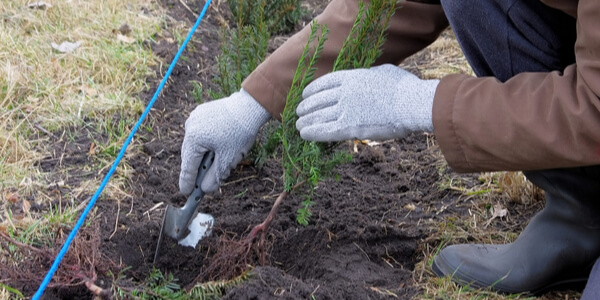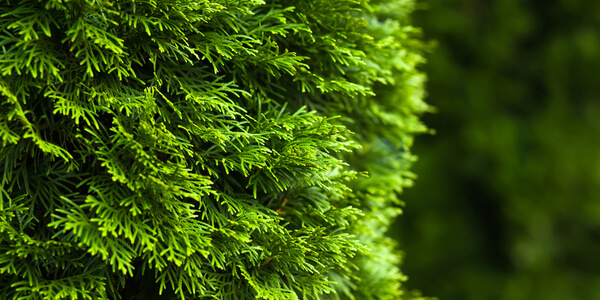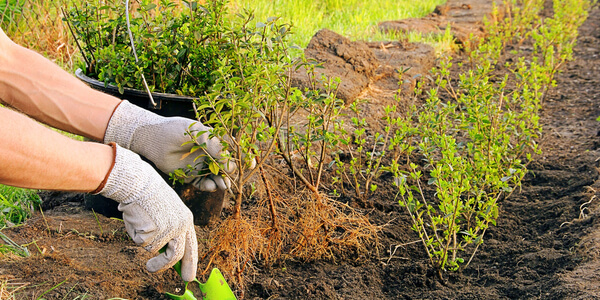Hedging plants are a great way to divide, enclose, and ad structure to any garden.
Hedges offer a cost-effective, easy to plant solution for even the unruliest gardens, instantly enhancing the look and feel of most outdoor spaces quicker than their owners could have ever imagined.
As well as providing structure to the garden, hedges are wonderful for attracting a variety of wildlife, including nesting birds.
What to Plant
The perfect time to plant a new hedge is between October and February as it allows new hedges to grow and flourish.
This is also the best time to invest in various hedging solutions such as bare-root plants and potted plants, as they are relatively cheap.
Bare root plants
Bare root hedging is the most cost-effective solution for your garden and consists of plants in their most basic form – bare roots, no soil, no fancy pots, and no compost. Bare root plants are an incredibly popular option because you get a lot of plants for your money, which is particularly good if you have a lot of garden to cover.
Rootball hedging
Rootball hedging is another cost-effective solution for your garden and is the perfect option for many garden owners looking to plant more developed, bushy hedges on a budget.
They take less cultivating than pot-grown plants, so if you aren’t green-fingered, a root ball is a perfect option for you!

How to plant hedging?
Planting and maintaining a new hedge is similar to any gardening you may have done previously.
Good soil preparation, plenty of garden compost and removal of weeds will help give your hedges the best start in your garden.
Bare root plants should be soaked in a bucket of water an hour or so prior to planting, especially if the roots appear dry, whereas potted plants should be transferred to the soil quickly after delivery.
Site examination
Before planting any hedges, your first point of call should be to check whether or not your soil is suitable for hedge planting.
If the ground is moist, you may need to add organic matter to the soil to help give it structure and raise its aeration prior to planting.
Ground preparation
Good ground preparation is key when planting hedging. The most common way to prepare the ground for planting is by mixing in plenty of compost, manure or organic matter to the surrounding soil.
Once you have prepared the ground, your next step is to dig your plant holes for the correct depth for your hedging.
There are two common methods of planting hedges, either with a digger (commonly known as strip planting) or with a spade (the slit planting method).
Digger method (strip planting)
If you have a large garden, then strip planting with a digger might be the easiest method for you to plant your hedges, especially if you have lots to do! Mini diggers can be hired fairly inexpensively from various companies, or landscape gardeners will often bring their own over.
If you’re opting for the digger method, you want to dig a trench half a meter by half a meter, then loosen the soil of the trench to aid good root penetration and drainage.
Place the hedges in the trenches and cover them with soil.
Bare rooted plants should always be planted to the same depth as they were when lifted in the nursery. You can tell this by looking carefully at the stem which will be green and brown. Plant to where the two colours meet.
Spade method (slit planting)
The spade method is a much simpler method and is most commonly used in many gardens. It’s most suitable for bare soil and grass and is often a cost-effective method compared to the digger method.
The spade method is relatively easy and sees you pushing your spade into the ground to create a slit in the soil. You then push the spade forwards, ensuring it’s deep enough to drop your plant roots into.
When the roots of the plant are inserted, you simply remove the spade and pop the soil back around the root of the hedge, pressing firmly to secure.

What time of year is best to plant a hedge?
Autumn is the ideal season for planting hedges as the soil is warm from the summer months of solar heating and is moist from the rain and dew. This makes for the perfect planting conditions for hedges.
Although container-grown plants can be planted at any time of year, providing the ground isn’t frozen or waterlogged, it’s autumn to early spring that are the best months to really plant hedges as they lie dormant around this time meaning there is less opportunity for things to go wrong!
Evergreen and semi-evergreen hedges
Late October or early April are the perfect times to plant evergreen and semi-evergreen hedges as the sun is not too harsh, and temperatures aren’t too cold. This allows plants to develop fine root hairs that help give them a head start in the spring months.
Deciduous hedges
Deciduous hedges such as beech, hawthorn and hornbeam can be planted anytime from early autumn through to late winter, although you need to ensure the soil can be worked easily.
If it is frozen solid or has been exposed to too much water, it’s best to leave planting your hedges until conditions improve.
If you are unable to plant your hedges when you set out, it is essential to keep your plants in a frost-free shed or garage and cover their roots with moist straw or a plastic sheet to prevent them from drying out.
Care and maintenance of your new hedge
Planting a hedge is the easy part. But it’s the taking care of it that’s difficult.
You need to ensure that once you’ve planted your hedges, you are taking care of them and maintaining them regularly.
It’s vital you keep your new hedges as grass and as weed-free as possible for the first few years to ensure they’re not competing for water, food or nutrients.
If you have weeds or grass growing around your new shrubs, it’s likely these will be growing in the bottom of it too. To alleviate this issue, you can add a layer of mulch such as wood chips, straw or manure around the base of your hedges to keep the weeds at bay – just make sure the soil is wet before putting anything down.
During the summer months, it is recommended you water the hedges frequently until they are established.
Lightly pruning hedges will encourage bushy growth so we recommend carrying this out on a regular basis to ensure your hedges grow beautiful and full.
By following the steps above you should be able to successfully plant lovely, bushy hedging in your garden. Good luck!

